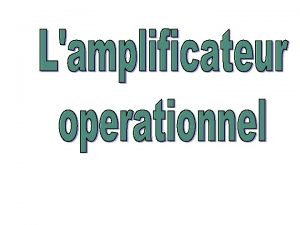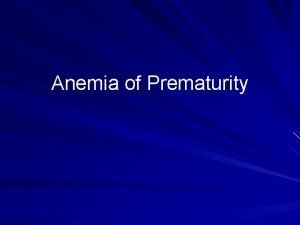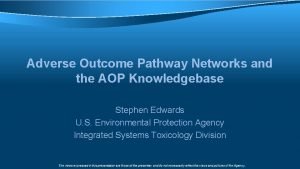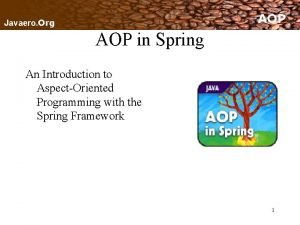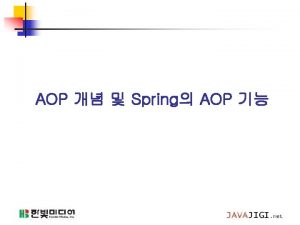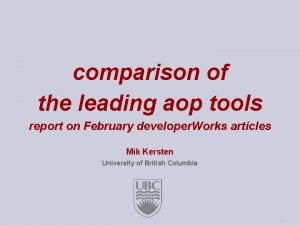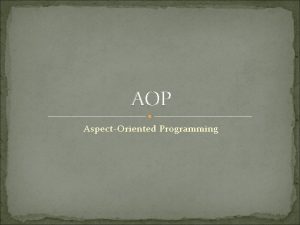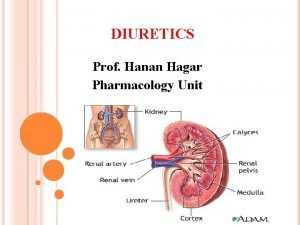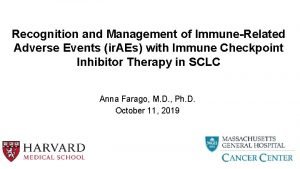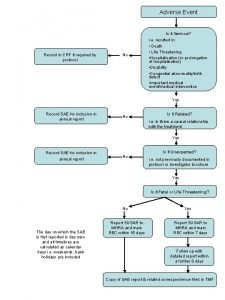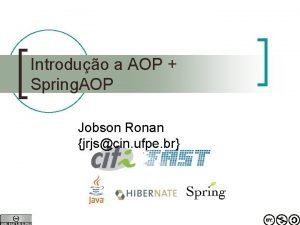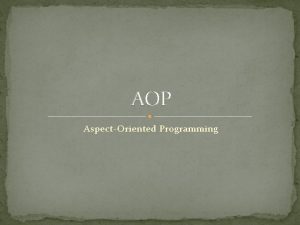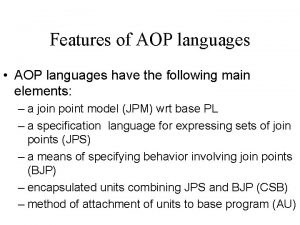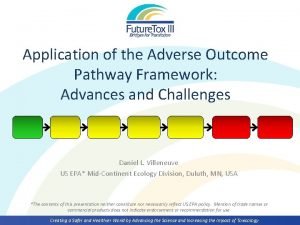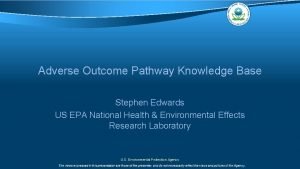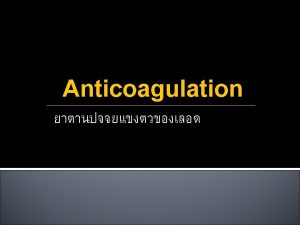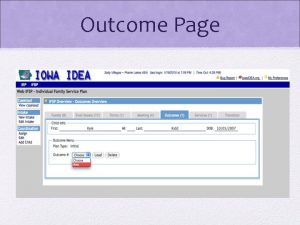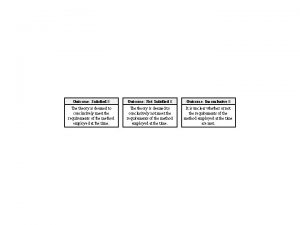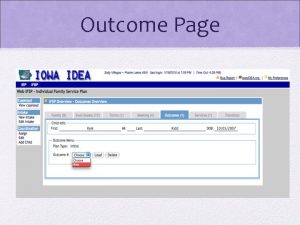Evaluating AOP Evidence Creating an Adverse Outcome Pathway























- Slides: 23

Evaluating AOP Evidence Creating an Adverse Outcome Pathway in the AOP Wiki SOT, 2018 Presented by: M. E. Meek, University of Ottawa bmeek@uottawa. ca

2 Outline/Objectives Why/How we evaluate evidence for AOPs Background Components of Evaluation – OECD Handbook/wiki Principles of Best Practice An introduction

Formalizing AOP Descriptions and Assessment to Support Regulatory Application • OECD Guidance on Developing and Assessing AOPs (2013, 2014) • Conventions and terminology • Information content of an AOP description • Weight of evidence (WOE)/confidence evaluation AOP Development and Description Case Studies AOPWIKI. org How certain are we? Users’ handbook supplement to OECD guidance document for developing and assessing AOPs. http: //aopkb. org/common/AOP_Handbook. pdf 3

Addressing the Research-Regulatory Interface: The AOP Knowledge Base OECD AOP devt and assessment (2012) Test Guidelines Hazard Evaluation AOPKB. org AOPWIKI. org > 200 AOPs Facilitating research collaboration: • Avoiding duplicative effort • Integration and analysis • Building networks • Accessible and searchable Addressing regulatory needs: • Systematically organized • Transparent, well documented • Scientifically-defensible, credible Identifying data gaps relevant to application

Mode of Action/Adverse Outcome Pathways Tissue Dose Key Event 1 Effective Dose Key Event 2 Key Event 3 Adverse Outcome Toxicokinetics (tk) Toxicodynamics (td) Chemical specific absorption, distribution, metabolism, excretion Chemical agnostic biological pathway Adverse Outcome Pathway (AOP) Integrated Testing MIE MOA Analysis; Biological Plausibility in Epi Studies Monitoring of Environment AOPs KERs KE AO

6 Background – WOE Analysis for AOPs Draws on experience in mode of action (MOA) analysis for regulatory application Modified for AOPs (non chemical specific biological pathway) Based on modified Bradford Hill (B/H)considerations Initially introduced to assess causality of associations observed in epidemiological studies in humans later adapted to impacts on wildlife (“ecoepidemiology”) Guidance expected to evolve as additional AOPs are developed and documented

Weight of Evidence/Quantitation of KERs Qualitative WOE To simplify, clarify and “codify” to the extent possible, qualitative WOE consideration addressing: Focus (a limited no. of critical elements) Including “patterns of empirical support” Clarification of the nature of supporting data through: defining questions criteria & examples Quantitation of KERs • quantitation of the KERs, as a basis for developing predictive response-response models How much change in KEup is needed to evoke some unit of change in KEdown?

AOP Wiki Section 5 b – MIE, KE, and AO descriptions Annex 1 AOP Page. Consideration Section 1 - Title Section 2 - Authors Section 3 – Status and Date Modified Section 4 A – Abstract Section 4 B – Background (optional) Section 5 A – Summary of the AOP MIE KEs AO Linkage table Defining Question s High Moderate KE Pages (section 5 B) • Description • Measurement/ detection • Taxonomic applicability Biological Plausibility of KERs (S. 6) Support for Essentiality of KEs (S. 7) Empirical Support for KERs (S. 6. ) Key Event Relationships/Associations Applicability domain(s) of the AOP Section 8 – Overall Assessment of the AOP Section 9 – Potential Applications of the AOP (Optional) https: //aopkb. org/common/AOP_Handbook. pdf MIE Page Chemical initiator(s) • Description • Measurement/ detection • Taxonomic applicability • Evidence for chemical initiation AO Page Section 6 – KER descriptions Life-stage Taxonomic Sex Section 7 – Assembly of Evidence - Essentiality Low KER Pages (section 6) Title Biological plausibility Empirical support Quantitative understanding • Uncertainties and inconsistencies • • • Description • Measurement/ detection • Taxonomic applicability • Regulatory relevance

Annex I 1. Support for Biological Plausibility of KERS 1 9 3. Empirical Supportb for KERs Defining Question Does KEup occur at lower doses and earlier time points than KE down and at the same dose of stressor, is the incidence of KEup > than that for KEdown? 67. Are there inconsistencies in empirical support across taxa, species and stressors that don’t align with expected pattern for hypothesized AOP? MIE => KE 1 High Moderate Low Multiple studies showing dependent change in both events following exposure to a wide range of specific stressors. (Extensive evidence for temporal, doseresponse and incidence concordance) and no or few critical data gaps or conflicting data Demonstrated dependent change in both events following exposure to a small number of specific stressors and some evidence inconsistent with expected pattern that can be explained by factors such as experimental design, technical considerations, differences among laboratories, etc. . Limited or no studies reporting dependent change in both events following exposure to a specific stressor (i. e. , endpoints never measured in the same study or not at all); and/or significant inconsistencies in empirical support across taxa and species that don’t align with expected pattern for hypothesized AOP Empirical Support of the MIE => KE 1 is. xxx. Rationale: · KE 1 => KE 2 Empirical Support of the KE 1 => KE 2 is xxx. Rationale: KE 2 => KE 3 Empirical Support of the KE 1 => KE 2 is xxx. . Rationale: Defining Question High Moderate Low Is there a mechanistic (i. e. , structural or functional) relationship between KEup and KEdown consistent with established biological knowledge? Extensive understanding based on extensive previous documentation and broad acceptance -Established mechanistic basis The KER is plausible based on analogy to accepted biological relationships but scientific understanding is not completely established. There is empirical support for a statistical association between KEs (See 3. ), but the structural or functional relationship between them is not understood. MIE => KE 1: (cut and paste the KER description into this cell) Biological Plausibility of the MIE => KE 1 is xxx. Rationale: KE 1 => KE 2 : (cut and paste the KER description into this cell) Biological Plausibility of KE 1 => KE 2 is xxx Rationale: KE 2 => KE 3 ((cut and paste the KER description into this cell) Biological Plausibility of KE 1 => KE 2 is xxx. Rationale: 2. Support for Essentiality of KEs 5 Defining Question High What is the impact on downstream KEs and/or the AO if an upstream KE is modified or prevented? Direct evidence from specifically designed experimental studies illustrating prevention or impact on downstream KEs and/or the AO if upstream KEs are blocked or modified AOP Moderate Indirect evidence that modification of one or more upstream KEs is associated with a corresponding (increase or decrease) in the magnitude or frequency of downstream KEs Rationale for Essentiality of KEs in the AOP is xxx: Low No or contradictory experimental evidence of the essentiality of any of the KEs.

10 Focus/Consistent Terminology – WOE for AOPs Biological Plausibility – KERs Biology of the pathway More important Essentiality – KEs within AOP Necessity of Key Events Experimental support normally from specialized studies to block or modify key events, stop/recovery studies Empirical Support – KERs Pattern of Quantitative Associations among Key Events often considered through application of stressors Less important

11 Biological Plausibility of KERs Strength of our hypothesis about normal biology, (structural/functional relationships) The extent to which the relationships in a pathway are known, documented and accepted Potential Measures? The extent to which we understand the pathway Enables “prediction” or “testing” of the impact of disturbing it

Biological Plausibility 12 Leydig Cell Cholesterol Progesterone Androstonedione Dihydrotestosterone External Genitalia Prostate Hypospadias Malformation Testosterone Testicular Descent Cryptorchidism Epididymus Malformation

13 Focus/Consistent Terminology – WOE for AOPs Biological Plausibility – KERs Biology of the pathway More important Essentiality – KEs within AOP Necessity of Key Events Experimental support normally from specialized studies to block or modify key events, stop/recovery studies Empirical Support – KERs Quantitative Associations among Key Events often tested through application of stressors Less important

Assembling Evidence - Essentiality of KEs 14 What is the impact on downstream KEs and/or the AO if an upstream KE is modified or prevented? KEs are necessary elements of an AOP Directly measured experimental support (direct evidence) is most influential e. g. , knockout models – absence/reduction of KEdown when KEup is blocked or diminished e. g. , reversibility studies where there is recovery when exposure is discontinued i. e. , blocking or reversing downstream responses by inhibiting (or allowing recovery) of upstream KEs

Essentiality Assembling the Evidence 15 Event Direct Evidence Indirect Evidence No or contradictory experimental evidence None Contradictory MIE KE 1 KE 2 KE 3……… KEn Weight of Evidence “Call” Based on the supporting evidence for all KEs and the considerations in Annex 1, the weight of evidence for the KEs in the context of the AOP overall is: High, Moderate or Low

16 Empirical Support • Quantitative information on extent of the impact if some aspect of (a known or suspected) pathway is perturbed by a stressor • Adding quantitative experimental support for association between key events to what we know about the biology • Associations are often tested experimentally by application of various stressors

Empirical Support 17 e Cholesterol Progesterone Androstonedione h f. C o t m Xa A Y am to f B Leydig Cell l ca i m Dihydrotestosterone Testosterone t mpac ? i External Genitalia Prostate Hypospadias Malformation Testicular Descent Cryptorchidism act p Z im Epididymus Malformation

Empirical Support 18 Less influential than biological plausibility Ranked below other considerations Correlation ≠ causation • Rather, contributes in combination with biological plausibility • In general, if have strong biological plausibility, a small amount of empirical support can provide strong confidence. • If weak plausibility (structural/functional relationship not understood) – need a lot of empirical support to have predictive confidence

Concordance Tables For AOPs 19 Chemical A and B thought to act on same MIE Species Chem Conc. FHM A 100 FHM B 0. 01 FHM B 0. 1 FHM B 1 RBT B 0. 05 RBT B 0. 5 RBT B 250 KE 1 KE 2 KE 3 KE 4

A “Snapshot/Network View” to Facilitate Consideration of Context Specific Application MIE H KE 1 M KER 2 KER 1 KE 2 L AO KER 3 Confidence (Qualitative) Elements: KERs – Biological Plausibility, Empirical Support (size of the arrow to represent H, M, L confidence) Essentiality of KEs: Event MIE KE 1 KE 2 KE 3……… KEn Direct Evidence Indirect Evidence No or contradictory experimental evidence Degree of Quantitation of KERs Effectopedia

Best Practice - Weight of Evidence/Confidence Analysis 21 Distinguishing data supporting the various modified B/H considerations Characterizing nature of support for each of these considerations based on defining questions Identifying inconsistencies/uncertainties in supporting data Templates/tables help Delineating consistent rationales for high, moderate and low confidence based on examples Identifying critical data gaps relevant to increasing confidence for regulatory application

References 22 Weight of Evidence Meek et al. (2014 a) New developments in the evolution and application of the WHO/IPCS framework on mode of action/species concordance analysis. Journal of Applied Toxicology 34: 1 -18 Meek et al. (2014 b) Mode of action human relevance (species concordance) framework: Evolution of the Bradford Hill considerations and comparative analysis of weight of evidence. Journal of Applied Toxicology 34: 595 -606. Guidance for AOPs OECD (2014) Users’ Handbook Supplement to the Guidance Document For Developing And Assessing AOPs https: //aopkb. org/common/AOP_Handbook. pdf Examples Becker et al. (2015) Increasing Scientific Confidence in Adverse Outcome Pathways: Application of Tailored Bradford-Hill Considerations for Evaluating Weight of Evidence. Regul. Toxicol. Pharmacol. 72: 514 -537. Yauk et al. (2015) Development of the adverse outcome pathway "alkylation of DNA in male premeiotic germ cells leading to heritable mutations" using the OECD's users' handbook supplement. Environ. Mol. Mutagen DOI 10. 1002/em. 21954

Expected Patterns for Empirical (Response-Response and Temporal) Support 23 KE early KEup KEdown KE late Temporal Association (Time) Early key events precede hypothesized late key events Response-Response (often considered on the basis of doseresponse for applied stressors, as a surrogate) The impact of early KEs is less than that for late KEs (severity ) Impact at increasing levels of biological organization to compromise normal function e. g. , impact on cells vs. organs Early key events occur at lower doses than late key events For a given dose, the incidence (relative abundance/proportion impacted/frequency) of early key events is greater than or equal to that of later key events e. g. , reversible interaction with DNA mutation tumours
 Spring filter interceptor
Spring filter interceptor What is aop
What is aop Soustracteur aop
Soustracteur aop Aop
Aop Aop network
Aop network Spring boot aspect example
Spring boot aspect example 1 11 12 1121 122111
1 11 12 1121 122111 Jboss aop
Jboss aop Determine_locale
Determine_locale What is a primary source
What is a primary source Jobs vancouver
Jobs vancouver Why does individual evidence have high probative value
Why does individual evidence have high probative value Primary evidence vs secondary evidence
Primary evidence vs secondary evidence A pair of latex gloves was found at a crime scene
A pair of latex gloves was found at a crime scene Is fiber class evidence
Is fiber class evidence Secondary sources
Secondary sources Genetic logical fallacy
Genetic logical fallacy Primary evidence vs secondary evidence
Primary evidence vs secondary evidence Class vs individual evidence
Class vs individual evidence Loop diuretics adverse effects
Loop diuretics adverse effects Ir adverse event
Ir adverse event Serious adverse event reconciliation
Serious adverse event reconciliation Adverse reaction definition
Adverse reaction definition Adverse event crf
Adverse event crf


